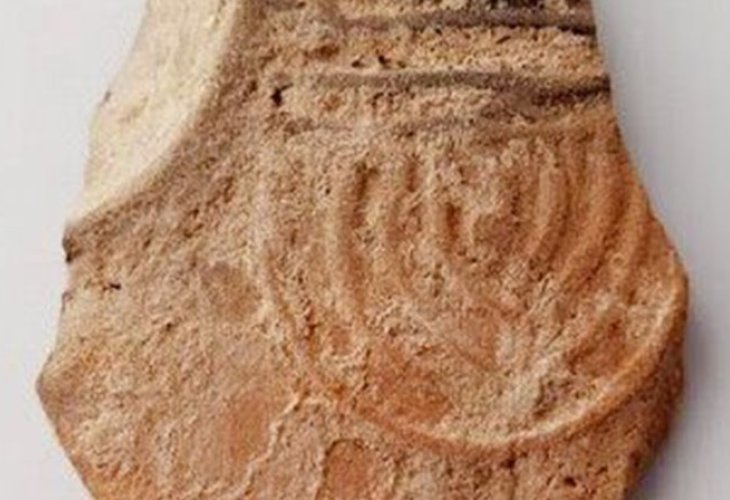Unveiling Ancient Jewish Life in Be'er Sheva
Recent excavations reveal extraordinary finds from about 2,000 years ago, shedding light on Jewish life in the area. Among the unique discoveries is a lamp with a nine-branched menorah, one of the earliest known such artifacts.
 Fragment of a lamp with a menorah decoration (Photo: Anat Rasiuk, Israel Antiquities Authority)
Fragment of a lamp with a menorah decoration (Photo: Anat Rasiuk, Israel Antiquities Authority)An archaeological excavation near the northern entrance of Be'er Sheva has uncovered extraordinary evidence of Jewish life in the area about 2,000 years ago. The dig, initiated by the Ministry of Housing and Construction, precedes the development of thousands of housing units in the area.
The site dates back to the 1st century CE through to the Bar Kochba revolt (135 CE), the end of the Second Temple Period when the Roman Empire ruled the land. It is situated near the southern border of the ancient Kingdom of Judea, close to a route from Tel Sheva to the southern coastal plain. The strategic location likely prompted the construction of a sturdy watchtower, the base of which has been uncovered, measuring 10x10 meters. A spiral staircase likely led to its two upper floors, which have not survived. During the late Roman period, stones from the tower were repurposed for nearby constructions.
During the dig, entrances were revealed that likely led to underground hideouts or escape tunnels. Other discoveries at the site include limestone vessels known to remain ritually pure, and dozens of copper coins, mostly from the period of the Roman procurators. Some coins were minted in Ashkelon and others in different cities across the Roman Empire.
Dr. Peter Fabian from the Department of Bible, Archaeology, and Ancient Near East at Ben-Gurion University of the Negev, and Dr. Daniel Varga from the Israel Antiquities Authority, are leading the excavation. They state, "The settlement remains cover an area of more than two dunams and include various buildings and installations. Notable among the discoveries are baking facilities, ancient garbage pits, and a subterranean system that may have served as a mikveh." Some of the site's remains show signs of intense burning. The excavation directors indicate that these signs suggest a crisis the settlement likely faced during the Great Revolt, around 70 CE.
A particularly special find is a fragment of a lamp classified as a "Southern" Judean lamp in the research. Once cleaned, the excavation team was thrilled to find a decoration of a nine-branched menorah on the lamp. According to Dr. Fabian and Dr. Varga, "This appears to be one of the earliest known artistic representations of a menorah." It is noted that among the few lamps of this type bearing a menorah design, the menorah's branches range from 8 to 11, rather than the 7 branches of the Temple menorah. The reason, according to the Babylonian Talmud, is that a menorah resembling the Temple menorah should not be made for domestic use.
(Video by Emil Aljam, Israel Antiquities Authority)

